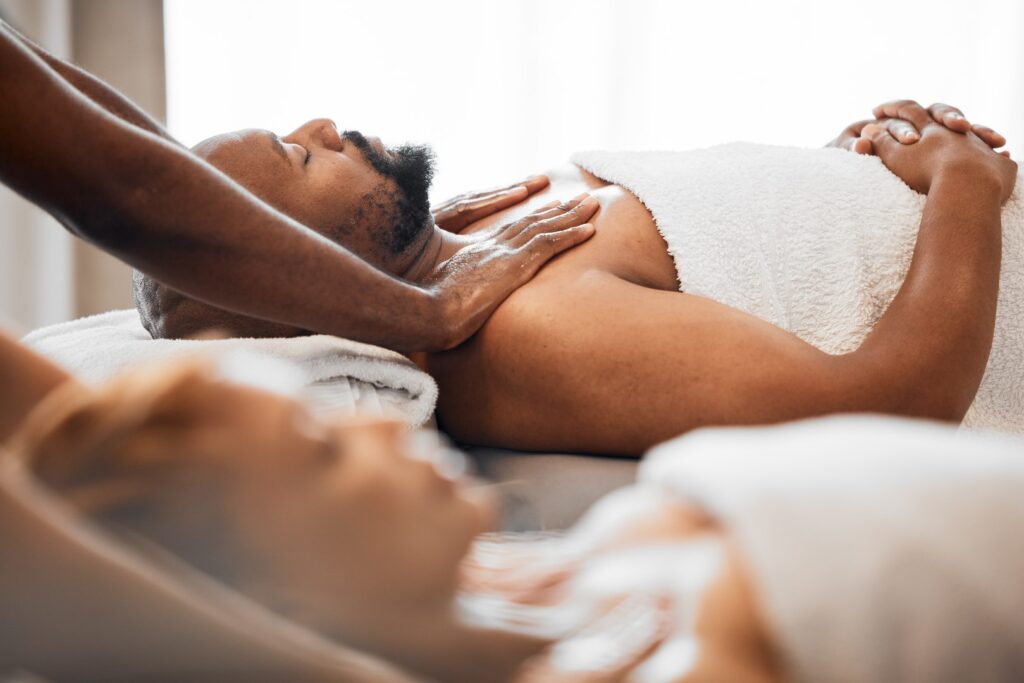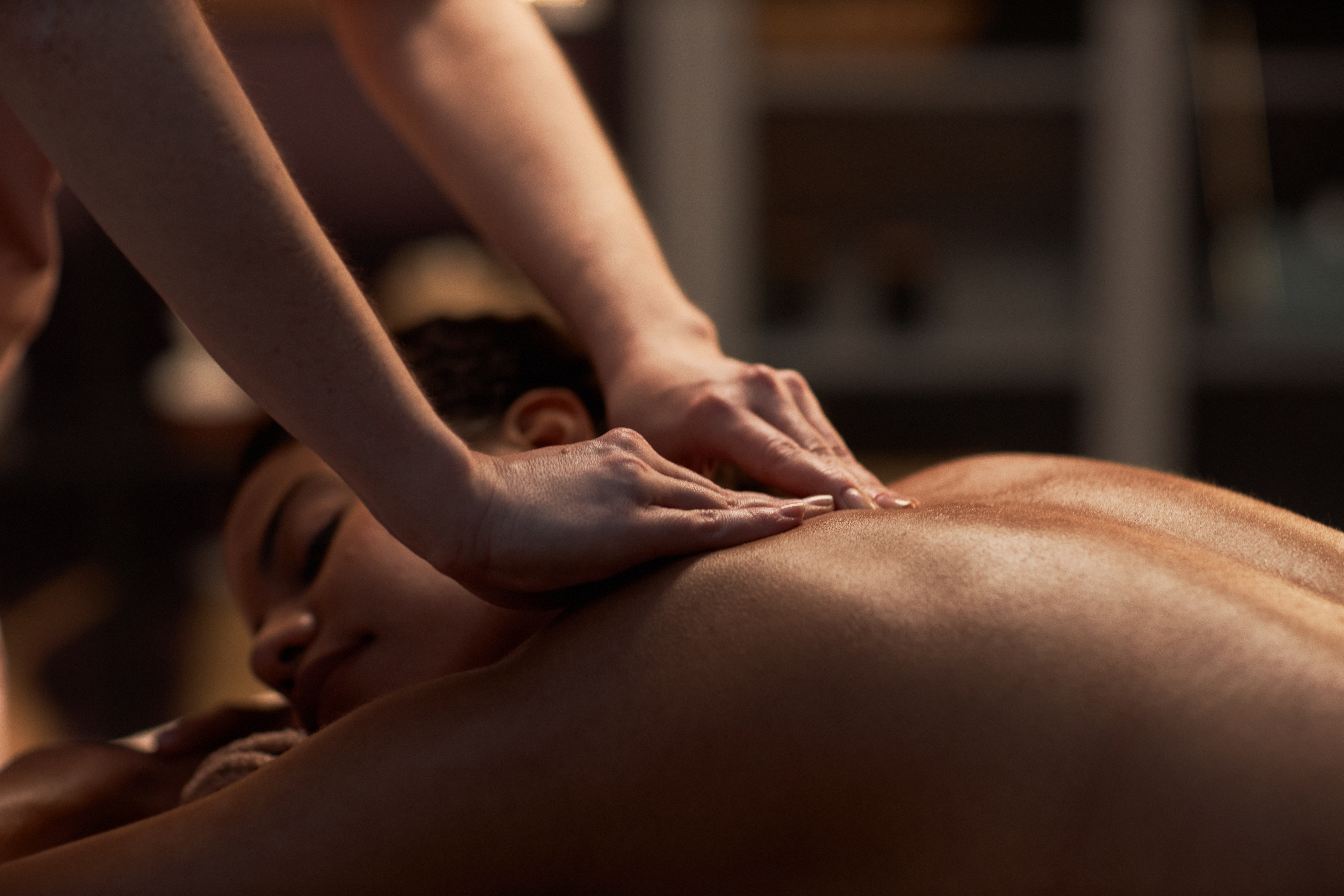You’ve probably heard that massage helps “remove toxins.” It’s one of the most common beliefs about massage therapy—but is it actually true? The science tells a more nuanced story.
There’s little evidence that toxins are “released” after a massage in the way many people think. However, that doesn’t mean massage doesn’t offer real, measurable benefits. If you’re curious about what actually happens in your body during and after a massage, you’re in the right place.
In this post, we’ll explore what really happens during a massage and why this centuries-old treatment still matters, even without the detox hype.
What Toxins Are Released After a Massage?
Despite what you may have heard, massage does not release harmful toxins that your body needs help removing. Your body is already very good at helping filter actual toxins out of the body and there is no evidence that massage forces toxic substances out of your system.
What massage can help with is the movement of metabolic waste—natural byproducts your body produces during daily activity. Think of things like lactic acid, which can build up in the muscles after exercise and contribute to temporary soreness or fatigue. When your muscles are manipulated through massage, this waste is more easily moved into the bloodstream, where your body can filter and eliminate it using its own systems (liver, kidneys, lymph nodes).
In other words, your body’s natural detox pathways are already doing their job, but massage may support that process by increasing blood flow and improving circulation.
While there’s no need to fear “toxins from the body” lurking in your muscles, there is plenty of reason to embrace massage for what it does do: support overall wellness, encourage recovery, and help you feel better in your skin.

The Health Benefits of Massage
Even though massage doesn’t “release toxins”, it still plays a valuable role in supporting your body’s natural immune system.
One of the key mechanisms? Stimulating the lymphatic system, which helps carry metabolic waste, immune cells, and other substances your body needs to regulate or eliminate. Certain massage techniques can gently encourage this flow, making it easier for your body to manage inflammation, swelling, or fluid buildup.
Massage also boosts blood circulation, which brings oxygen and nutrients to your tissues while helping move cellular waste products toward elimination. This is especially helpful after procedures or workouts that leave your muscles tight, sore, or overworked. Improved circulation doesn’t just support detox—it also aids recovery and overall skin and tissue health.
So while massage isn’t “detoxing” you in the dramatic way some headlines claim, it is improving the efficiency of your existing systems and helping your body work the way it was designed to.

The Stress Factor: Why Relaxation Isn’t Just a Bonus
While it’s easy to think of massage as a luxury, its impact on reducing stress is both measurable and meaningful. And that matters—because stress doesn’t just affect your mood. It can disrupt immune function, slow digestion, increase inflammation, and impair your body’s ability to recover.
Massage therapy helps activate the parasympathetic nervous system—your body’s “rest and digest” mode. This shift reduces levels of cortisol (your stress hormone), relaxes tight muscles, and promotes a sense of calm. It’s one of the reasons many clients feel not just physically better after a session, but mentally clearer too.
This stress relief also works in tandem with the other benefits of massage, like improved circulation and lymphatic movement. By helping the body unwind, massage can indirectly support everything from better sleep to clearer skin—without relying on dramatic claims about toxin release.

What to Expect After a Massage
After a massage, it’s common to feel relaxed and rejuvenated—but you may also feel a little sore (especially after a deep tissue massage).
To make the most of your treatment, here are a few simple ways to support your body’s natural recovery:
- Stay hydrated: Drinking water helps support your lymphatic system and keeps waste products moving smoothly out of your body.
- Take it easy: Avoid intense workouts right after your session, especially if you received deep pressure or targeted work.
- Listen to your body: If you feel tired or sore, that’s normal. Rest, gentle stretching, or a warm bath can help.
- Follow your provider’s advice: Your massage therapist may give you personalized tips depending on the focus of your session.
These aftercare habits support recovery and help you get the most out of your session—whether you’re easing muscle tension, improving mobility, or simply giving your body space to reset and recharge.
Book Your Massage Today
At the end of the day, massage doesn’t need exaggerated claims to be worthwhile. When performed by a licensed massage therapist in a professional, medically guided setting, it offers real benefits: improved circulation, enhanced immune function, reduced tension, and support for your body’s natural healing processes.
At Oviedo Med Spa, we believe massage is more than a feel-good indulgence—it’s a smart addition to your wellness routine. Whether you’re managing stress, recovering from treatments, or simply giving your body the care it deserves, our massage services are designed to help you feel your best—inside and out.
Ready to experience the benefits for yourself? Book a consultation or join our waitlist to be among the first to experience massage therapy at Oviedo Med Spa—where results, relaxation, and expert care go hand in hand.

